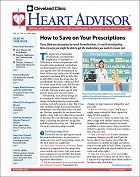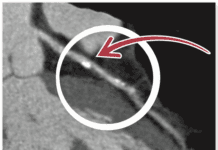A test typically used to help diagnose peripheral arterial disease (PAD) may help doctors more accurately predict a patients risk of cardiovascular disease and death, according to a study published in the July 9 Journal of the American Medical Association. The ankle-brachial index (ABI) measures blood pressure in the ankle and the arm while a person is at rest. (A normal resting index is 1 or 1.1; less than 1 is considered abnormal.) Blood pressure is taken again at those sites after a patient walks for five minutes on a treadmill. A drop in your ABI after exercise could indicate PAD, which is linked to higher risks of heart attack and stroke. Researchers reviewed 16 studies involving nearly 50,000 people and found that a low ABI vastly increased 10-year cardiovascular mortality risk. They suggest that ABI, along with the Framingham risk score-which includes age, gender, smoking, blood pressure and cholesterol levels-could more accurately determine low- and high-risk patients, and lead to more aggressive treatments for those at high risk.
To continue reading this article or issue you must be a paid subscriber.
Sign in





